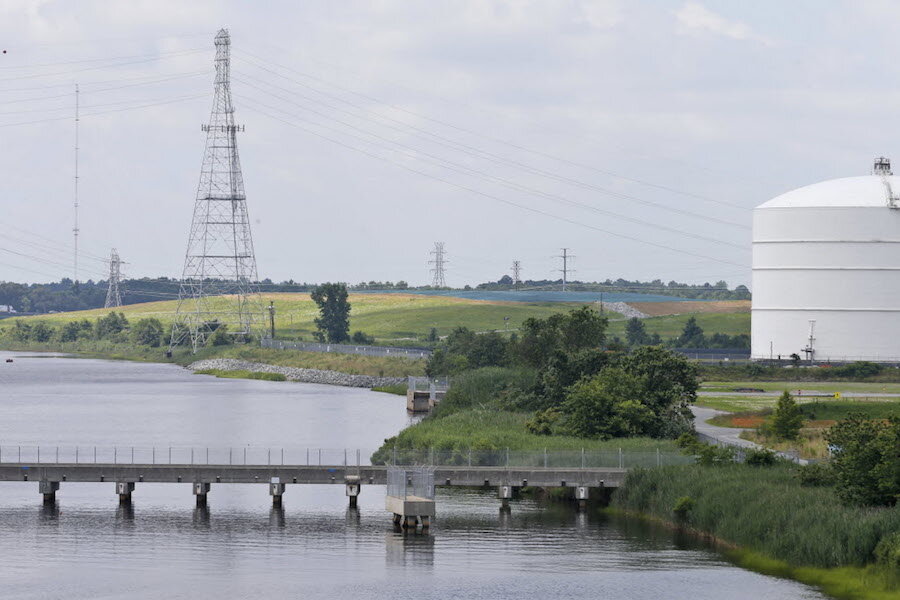Virginia coal ash case could have national implications
Loading...
Coal ash disposal sites could soon look different to avoid leaching arsenic and other heavy metals into groundwater, depending on the outcome of a potentially landmark trial in Virginia.
In the first federal Clean Water Act trial focusing on coal ash leaks, Judge John A. Gibney Jr. heard four days of arguments against Dominion Virginia Power, last month, about the risks ash pits in Virginia currently pose to ground and surface waters, such as the Elizabeth River. On June 24, he said he would rule after reviewing briefs from both sides.
During the June trial, one expert testified that the 3 million tons of coal ash at the Chesapeake Energy Center site contains 150 tons of arsenic, according to the Southern Environmental Law Center, which represented environmentalists, scientists, and experts testifying on behalf of the Sierra Club in the trial.
A key question in the ruling is whether the Clean Water Act applies to tainted groundwater connected to surface water. “It’s always been a real gray area the extent you need a Clean Water Act permit for situations where there’s leaching of toxic materials into groundwater,” Robert Percival, director of the environmental law program at the University of Maryland told the Associated Press. Either way Judge Gibney rules, the case will change coal ash disposal across the country, environmental experts say.
“This has Supreme Court written all over it,” Patrick Parenteau, a professor at Vermont Law School who specializes in environmental law told AP.
Environmentalists and utilities have been at odds over coal ash disposal and the implications for groundwater for decades, especially as air pollution regulations have become more restrictive, as Noelle Swan reported for The Christian Science Monitor in 2014:
As utilities have invested in retrofits to help rein in air pollutants, the amount of toxins stored in coal ash impoundments has grown....
In 2010, there were an estimated 300 coal ash landfills and 584 lagoons at coal-fired power plants in the US, according to the Environmental Protection Agency. Thirty-one percent of coal ash landfills and 62 percent of lagoons were unlined as of 2004, according to the most recent EPA estimates available.
'This is a major risk across the country,' says Frank Holleman, an attorney with the Southern Environmental Law Center, who has spent the past several years pressuring states and utilities in the Southeast to better manage coal ash. 'One-half of all the toxic pollution of all the rivers of America comes from these plants.'
Evidence of arsenic leaving groundwater and entering surface water is not clear, however, and excavating all dumps and transporting the waste to lined landfills could cost a trillion dollars, according to Jim Roewer, executive director of the Utility Solid Waste Activities Group, a Washington-based lobbying organization.
Even though the director of operations for the Virginia Department of Environmental Quality, James Golden, testified that there is no evidence that arsenic is seeping into surface water, others told the judge the position of much of Dominion’s coal ash beneath sea level makes it prone to leaching heavy metals into groundwater.
The ruling could disproportionately affect the Southeast, which has the most coal ash sites near waterways in the country. Heavy litigation about coal ash began with Duke Energy, which pleaded guilty last year to federal environmental crimes and agreed to pay $102 million in fines and restitution for years of illegal pollution from coal ash pits at five North Carolina power plants and a major spill on the Dan River in 2014.
Now, Virginia’s largest electric utility, Dominion, is fighting a lawsuit from the Sierra Club about its 3 million tons of coal ash at the Chesapeake Energy Center, a coal power plant that was retired in 2014. Instead of doing a complete overhaul of all waste facilities, the utility would prefer capping ash sites with rainproof liners. Gibney also criticized the Sierra Club’s dramatic proposal.
“Whatever the outcome is, the very fact that Dominion has faced this level of scrutiny and has faced widespread calls to clean up its site would encourage other utilities not to take this same path,” the SEL's Mr. Holleman told the AP.
Material from AP was used in this report.
[Editor's note: The original story incorrectly identified the judge in the case.]








